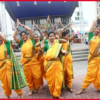Introduction
While the audience sees the dazzling costumes, synchronized movements, and captivating performances of a dance troupe on stage, what remains hidden is the immense preparation, dedication, and hard work that goes into making each show a success. Behind every flawless performance is a journey filled with rigorous training, discipline, teamwork, and countless hours of practice.
From choreography rehearsals to costume fittings and mental conditioning, the process of putting together a dance performance is both physically demanding and emotionally intense. This article takes you behind the curtains to explore the hard work, dedication, and challenges that dancers face while preparing for a performance.
The Rigorous Training Regimen
1. Daily Practice and Physical Conditioning
A professional dance troupe follows an intense daily practice schedule to maintain fitness and perfect their routines. Training involves:
-
Strength and Endurance Workouts – Dancers engage in cardiovascular exercises, weight training, and core strengthening to build stamina and agility.
-
Flexibility Training – Stretching exercises, yoga, and Pilates help increase flexibility, which is crucial for executing complex moves.
-
Technique Drills – Repeating dance steps, practicing transitions, and refining footwork to achieve precision.
Dancers spend hours rehearsing basic movements before even attempting full routines, ensuring that every step is executed with perfection.
2. Mastering Choreography and Synchronization
A dance troupe must perfect their choreography with absolute synchronization. This process includes:
-
Breaking Down Steps – Learning each movement carefully and understanding its rhythm.
-
Group Coordination – Ensuring all dancers move in harmony and maintain proper spacing.
-
Fine-Tuning Expressions and Gestures – For dance forms like ballet, Bharatanatyam, or contemporary, facial expressions play a key role in storytelling.
Rehearsals can last several hours a day, requiring extraordinary patience and commitment.
3. Overcoming Physical Challenges
Dancers push their bodies to extreme limits, often facing:
-
Muscle Strains and Injuries – Ankle sprains, knee injuries, and back pain are common due to continuous movement and strain.
-
Exhaustion and Fatigue – Long hours of rehearsals can drain energy, requiring strict diet and rest schedules.
-
Mental Pressure – The need for perfection can lead to anxiety, making mental strength and focus equally important.
Despite these challenges, their love for dance keeps them motivated to push forward.
The Role of Costumes and Props in Dance Performances
1. Designing and Selecting the Perfect Costume
Costumes are not just about aesthetics; they are an essential part of a performance. The preparation process involves:
-
Material and Comfort Consideration – Dancers need attire that allows fluid movement while reflecting the theme of the dance.
-
Handcrafted Detailing – Many dance costumes, especially in traditional styles, involve embroidery, beadwork, and embellishments that take weeks to complete.
-
Quick Costume Changes – In performances with multiple routines, dancers must practice rapid costume changes backstage.
A misplaced accessory or uncomfortable attire can disrupt a performance, making costume preparation a crucial aspect of behind-the-scenes work.
2. Managing Props and Stage Setup
Props add depth to a performance, but they require careful handling and practice. Preparation includes:
-
Rehearsing with Props – Dancers must get comfortable using props like sticks, ribbons, or large set pieces without affecting their movements.
-
Stage Layout Planning – Positioning must be precise to avoid missteps or accidents on stage.
-
Backup Planning – Extra props and costumes are kept ready in case of last-minute mishaps.
The backstage crew works tirelessly to ensure every element is in place, allowing dancers to focus solely on their performance.
Mental Preparation: The Psychology of a Performer
1. Handling Performance Anxiety
Even experienced dancers face stage fright and pressure to deliver flawless performances. To cope, they:
-
Practice Meditation and Visualization – Imagining a successful performance helps build confidence.
-
Develop a Pre-Performance Ritual – Warm-ups, breathing exercises, and team huddles create a sense of unity and focus.
-
Stay Mentally Resilient – Learning to handle criticism and mistakes is part of the journey to improvement.
2. Teamwork and Communication
A dance troupe operates as a family, relying on trust and mutual understanding. Successful teams:
-
Support Each Other Emotionally – Encouragement and motivation keep morale high.
-
Communicate Openly – Addressing concerns and making adjustments ensures smooth collaboration.
-
Adapt to Challenges Together – Whether it’s a last-minute change in choreography or an unexpected technical issue, a strong team handles challenges effectively.
The Final Rehearsal: Preparing for the Big Day
1. Dress Rehearsals and Stage Marking
Before the actual performance, troupes conduct full-dress rehearsals to fine-tune every detail. This includes:
-
Practicing in Full Costume and Makeup – Ensuring comfort and adjusting any wardrobe issues.
-
Sound and Lighting Checks – Coordinating with technicians to set cues for music, spotlights, and special effects.
-
Final Adjustments to Movements – Making last-minute refinements to posture, transitions, and expressions.
2. Staying Calm Before the Performance
The moments before stepping on stage are filled with excitement and nerves. Dancers follow a pre-show routine:
-
Light warm-ups to prevent injuries.
-
Team huddles for motivation and focus.
-
Last-minute breath control exercises to stay composed.
With adrenaline pumping, the troupe takes their positions, ready to captivate the audience with months of hard work.
The Reward: The Magic of Performance
1. The Energy of the Audience
The cheers, applause, and energy of a live audience fuel a dancer’s passion. Every movement, every expression is a story unfolding on stage, creating an unforgettable experience for both performers and spectators.
2. The Sense of Accomplishment
After months of preparation, delivering a successful performance is the ultimate reward. The team celebrates their journey, knowing their dedication has paid off.
3. Learning and Growth
Every performance teaches dancers valuable lessons:
-
How to adapt to unexpected situations.
-
How to refine techniques for future shows.
-
How to continue evolving as an artist.
Conclusion
The glamour of a dance performance is the result of relentless effort, discipline, and passion behind the scenes. From grueling rehearsals to costume preparation, stage coordination, and mental resilience, a dance troupe undergoes an extraordinary journey to bring their art to life.
The next time you watch a mesmerizing dance performance, remember the dedication, sweat, and teamwork that make it possible. Because behind every breathtaking moment on stage, there lies a story of perseverance, passion, and the love of dance.






